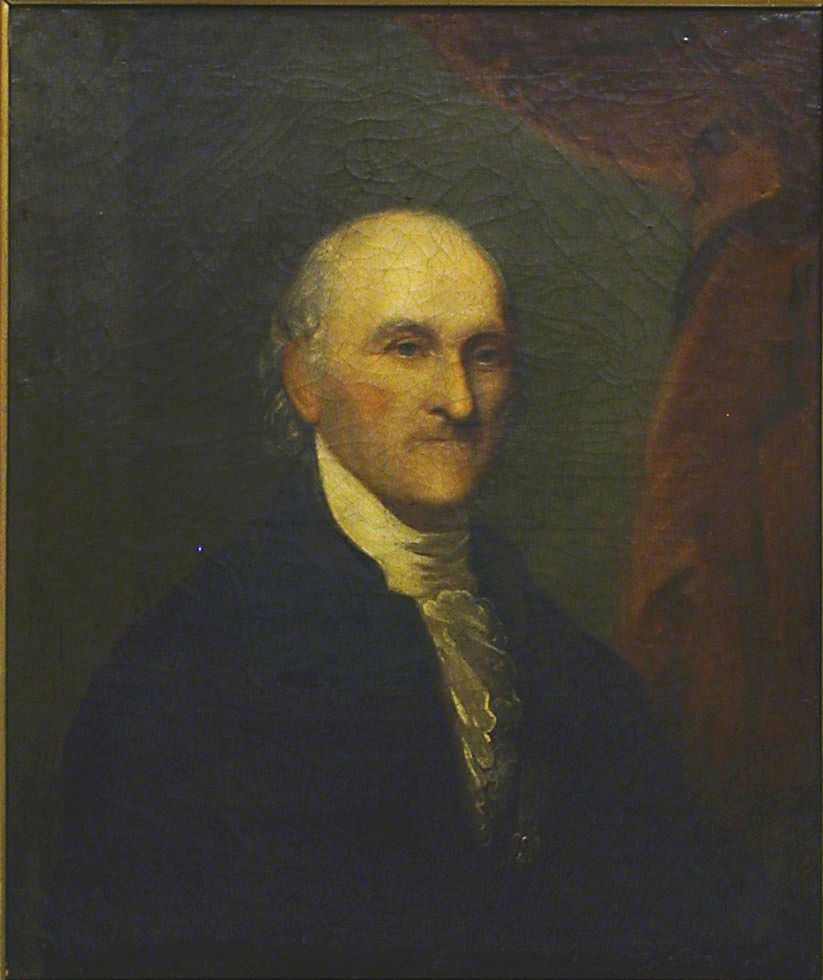Centre Furnace was the first charcoal iron furnace in what would become Centre County. The remains of the furnace stack on East College Avenue in College Township are a reminder of the role the iron industry played in the early decades of the county’s history.
Starting in the 1770s, prominent Philadelphians bought land in what would become Centre County. Pennsylvania’s first iron works began operation in 1716 in Berks and Chester counties. Entrepreneurs saw the potential for new iron works in resource-rich central Pennsylvania.

In 1791, Col. John Patton and Gen. Samuel Miles, two Revolutionary War veterans, built the Centre Furnace and it went into blast the following year. Miles, who was serving as mayor of Philadelphia, never lived in Centre County, but he sent his sons, John and James, to manage his property. Patton was the first ironmaster of Centre Furnace and lived in a cabin nearby.
About 100 men were employed at the furnace, working 12-hours shifts. The Centre Furnace operation was like a small village that included a store, saw mill, and adjoining farmland. Small log cabins where many of the employees lived with their families where scattered around the property. A church was used for services and was the center of social life.
Soon, other iron works were established in the area, including Harmony Forge, which was built by Miles and Patton to operate in conjunction with the Centre Furnace. (The name Harmony reflected the idea that the two furnaces worked together.) In all, eighteen iron works operated in the county at one time or another.
By 1805, Patton and Miles had died, and John and James Miles took over ownership. Four years later, they decided to close Centre Furnace and focus on Harmony Forge. In 1826, John Miles and Joseph Green formed a partnership and announced that Centre Furnace would go into operation again.
Two years later, Centre Furnace was sold to another partnership that included James Irvin. Born in Linden Hall, Irvin had extensive business ventures and he represented Pennsylvania’s 14th District in the U.S. House of Representatives. Irvin updated the furnace and built a new stack that still stands on East College Avenue.
In 1842, Moses Thompson, Irvin’s bother-in-law, became ironmaster of Centre Furnace. Thompson was a banker who had extensive land holdings in the county. When Irvin suffered major financial loses during the Panic of 1857, Thompson acquired Centre Furnace. He and his family moved into the ironmaster’s mansion.
In 1855, Irvin and Thompson offered 200 acres of Centre Furnace land for the new Farmers’ High School of Pennsylvania that was being considered for establishment. The offer was accepted by state officials and led to the founding of what would become Penn State. Over the ensuing decades, Thompson and his family sold more property to expand the college.
Centre Furnace ceased operations in 1858. By this time, larger anthracite- and coal-fired iron furnace were displacing the older, smaller furnaces fueled by charcoal in central Pennsylvania. The Thompson family continued to live in the mansion until Moses died in 1891.

In the late 1960s, the furnace stack and mansion were threatened by a proposed bypass on State Route 322 around State College. Plans called for razing the stack and mansion for a ramp connecting the bypass with East College Avenue. Local historical leaders opposed the plan, and after a series of meetings, the plans were redrawn.
The Centre County Historical Society acquired the mansion in 1978 and undertook a major restoration. Today, the mansion is a historic house museum and the headquarters of the historical society. The society maintains the furnace stack.
Ford Risley
Sources:
Macneal, Douglas. “History of Centre Furnace Lands,” Centre County Heritage. Vol. 32, Nos. 1 & 2, 1996.
Stevens, Sylvester K., The Centre Furnace Story: A Return to Our Roots, edited by Philip S. Klein. State College: Centre County Historical Society, 1985.
First Published: November 23, 2022
Last Modified: February 17, 2025
